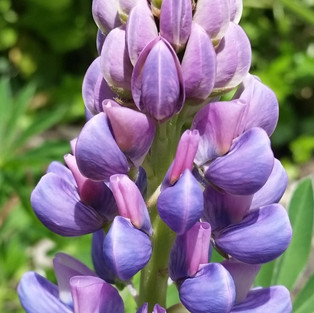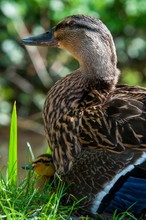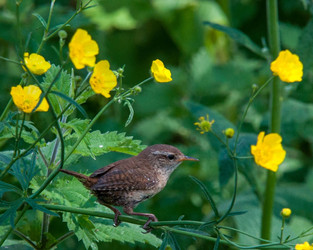New Year and the garden is calling
- Clare
- Jan 1, 2021
- 9 min read
Happy New Year! As we bid farewell to 2020, it would nice to feel we were starting 2021 in a more positive state. However, with two vaccines through the developmental stages and already being administered, I can only hope that 2021 will bring happier times for everyone.
Oxfordshire is currently in tier 4 and I am feeling the pull of the garden more than ever. It is true that we are hoping to sell up and move to pastures new in 2021, though in many ways this has focused my mind on all I have to do to show the garden at its best and there is much to be done. We do all sometimes need a bit of encouragement to get going during the Winter months however and, as I stared bleary eyed into my second mug of coffee this morning, I realised I needed it more than most!
Moments of calm and simple contentment are also important. It is well known that fresh air and exercise can help us feel more energized, and creativity (whether making something yourself or appreciating the talent of others) can lighten the mood. On this basis, despite entering a month traditionally associated with resolutions and deprivations, I decided that 2020 has been tough enough and therefore broke with tradition to put together a list of nature and/or garden related treats (in the form of tasks, videos and readings), which I have shared below. There is something for each day of January, though of course this is merely intended as a guide and suggestions do not need to be followed in a specific order. I would love to know if you have any other ideas!
1. Read The Old Man and The Sea by Ernest Hemingway.
To be honest, any gardening or nature inspired book will do here. I chose The Old Man and The Sea as it is an old favourite of mine and also as it is relatively short. However, if this doesn't appeal, The Guardian and GoodReads provide lists of a wide range of nature books that might inspire you:
2. Listen to Louis Armstrong's version of "What a Wonderful World". Such a beautiful interpretation of a lovely song:
3. Take a bit of time to plan your garden for the coming year. Start by sorting out your seeds, throwing away any empty or out of date packets and noting down any seeds you would like to re-stock. Think about what you would like to grow this year and/or what 'look' you envisage for your garden. Draw plans if it helps.
4. Watch The Secret Garden. 1993 version currently available on Netflix.
5. Indulge in some nature related poetry by re-visiting William Wordsworth's famous poem about Daffodils:
I wander'd lonely as a cloud That floats on high o'er vales and hills, When all at once I saw a crowd, A host of golden daffodils, Beside the lake, beneath the trees Fluttering and dancing in the breeze.
Continuous as the stars that shine And twinkle on the milky way, They stretch'd in never-ending line Along the margin of a bay: Ten thousand saw I at a glance Tossing their heads in sprightly dance.
The waves beside them danced, but they Out-did the sparkling waves in glee: - A poet could not but be gay In such a jocund company! I gazed - and gazed - but little thought What wealth the show to me had brought.
For oft, when on my couch I lie In vacant or in pensive mood, They flash upon that inward eye Which is the bliss of solitude; And then my heart with pleasure fills And dances with the daffodils.

6. Feed the birds: Whether it's the birds in your garden, or ducks at the local pond, go and feed them. NB When feeding your garden birds, remember that they also need water so top up bird baths with fresh water daily and melt any ice with warm water on colder days.
7. Watch a video of the Aurora Borealis on YouTube. Seeing the Aurora Borealis was on my "list of things to do" during my lifetime and happily is one of the few I have been able to tick off. There are hundreds of videos available; here is one to start you off:
8. Listen to John Beatty's TED talk about connecting with nature:
After some thought, I decided that I have experienced this feeling on a small scale on at least three occasions: lying on a frozen lake in Finland watching the Aurora Borealis, standing alone in my grandparent's field as a child and realising for the first time that here (amongst nature) I am truly content, watching wild animals on safari in Africa and (occasionally) having them look me right in the eye.
9. Plant some seeds. Gardeners' World provides advice on things that can be planted now. I will be starting off some chilli seeds and microgreens indoors this month.
10. Read "The Eagle" by Alfred Lord Tennyson:
He clasps the crag with crooked hands; Close to the sun in lonely lands, Ring'd with the azure world, he stands. The wrinkled sea beneath him crawls; He watches from his mountain walls, And like a thunderbolt he falls.
11. Listen to Physicist Richard Feynman talking about "names"
Richard Feynman worked on the Manhattan project in World War 2, was part of the commission investigating the Challenger Disaster and (less well known) was also a talented artist. In the following video from the 1970s, Feynman talks briefly about the distinction between knowing things (and sounding knowledgeable) and truly understanding them.

12. Cook something in season. The weather is cold and the ground is hard, but January is the ideal time to harvest hardier winter vegetables like sprouts, some varieties of cabbage, cauliflowers and leeks. Also some root vegetables such as parsnips and swede.
Here is one of my favourite soup recipes for spiced parsnip soup, taken from "500 Best Ever Recipes" edited by Martha Day. NB I tend to double up on the spices and omit the cream and garnish, though that's just personal preference!
Ingredients (serves 4-6): 40g butter, 1 chopped onion, 675g diced parsnips, 1tsp ground coriander, 1/2 tsp ground cumin, 1/2 tsp ground turmeric, 1/4 tsp chilli powder, 1.2 litres chicken stock, 150ml single (light) cream, 1 tbsp sunflower oil, 1 garlic clove cut into julienne strips, 2 tsp yellow mustard seeds (or crushed coriander seeds), salt and black pepper.
Method:
Melt the butter in a large pan over a medium heat. Add the onion and parsnips and cook gently, stirring occasionally, for about 3 minutes.
Stir in the spices and cook for 1 minute more. Add the stock, season to taste with salt and pepper and bring to the boil, then reduce the heat. Cover with a tight fitting lid and simmer for about 45 minutes, until the parsnips are tender.
Cool slightly, then ladle the soup into a blender and process until smooth. Return the soup to the rinsed out pan, add the cream and heat through gently over a low heat.
Heat the oil in a small pan, add the julienne strips of garlic and yellow mustard seeds and cook briskly, stirring occasionally, until the garlic is beginning to brown and the mustard seeds start to pop and splutter. Remove the pan from the heat.
Ladle the soup into warmed soup bowls and pour a little of the hot spice mixture over each. Serve immediately.
13. Buy a house plant. From potted herbs to cacti, African violets to dracaenas, house plants can uplift a botanical decorating scheme and are believed to have a number of health benefits. House Beautiful lists some of the plants that are set to be big sellers in 2021:
14. Listen to Tom Lehrer's Pollution song. Now in his 90s, Tom Lehrer is a retired American musician, satirist, songwriter and mathematician. He wrote satirical songs for the television show "That was the Week That Was" in the 1950's and 1960's, bringing sensitive subjects into the public eye in a humorous way. Pollution was written in 1960 and is one of his best known songs.
15. Check out the entries in The Natural History Museums Wildlife Photographer of the Year competition:
16. Learn about the remarkable Marianne North and her collection of botanical art:
17. Create your own piece of artwork. Whether photography, painting or sculpture inspires you, create your own masterpiece inspired by the natural world. This could be anything from a simple line drawing of a pot of herbs, to a water colour of the garden!
18. Go on a virtual garden visit with the National Garden Scheme:
19. Survey the birds in your garden. Grab an identification guide, a pair of binoculars (if needed) and sign up for the RSPB Big Garden Birdwatch.
20. Listen to Carl Sagen's "pale blue dot" speech: Carl Sagen was an American astronomer, planetary scientist, cosmologist, astrophysicist, astrobiologist, author, poet, and science communicator. His famous speech about a photograph taken of the Earth by the Voyager I probe is beautiful in its simplicity (the image was captured after Sagen convinced NASA that it was worth the cost, even if it had no scientific value).
21. Get ready for Spring by tidying your plant pots and cleaning and sharpening your garden tools (including hoes, secateurs and shears). Spray metal tools with oil.
22. Buy yourself a bunch of cut flowers.

23. Undertake an online gardening course or listen to a lecture. It's always good to learn a new skill or gain a refresher. The restrictions of 2020 have led to many organisations offering courses and lectures online, many of which are free. The following websites include some examples:
24. Look at the stars. Make yourself a warm drink after dark, switch off the house lights and go outside to look at the night sky. Jodrell Bank provides a guide of what you can look out for each month:
25. Create a wildlife habitat. Put up a bird box (or check and clear out the ones you have), build a insect den, or add a hedgehog house. Old Christmas trees can also be used to create a cosy little shelter for birds and insects through the winter months (e.g. see How to recycle your old Christmas tree - Saga).
26. Fill an outdoor pot with flowers that are blooming now and place it by your front door. I don't have any heathers in my garden and therefore I am hoping to buy a few Winter varieties and mix these up with some colourful cyclamen, winter pansies or primroses. If these don't appeal, Gardeners' World can always be relied upon to provide some more ideas:
Supporting your local garden centre is always great but, if you cant get out, The Telegraph lists some of the top nurseries that offer home delivery:
27. Watch David Attenborough. Watch the short or extended trailer for David Attenborough's latest series "A Perfect Planet", and then listen to him reminisce about his famous encounter with mountain gorillas in Rwanda in 1978.
28. Get out and visit another garden for inspiration. I realise this is difficult with the current restrictions. However, noticing other people's gardens, or walking around a park during your daily exercise, can be as enlightening as a visit to a grand National Trust property.

29. Start growing your own cut flowers. Growing your own flowers means you can enjoy seasonal bunches at a fraction of the cost, and it needn't take a huge plot. Sweet peas, for example, can be grown in a pot and can be sown now.
If you want some more ideas, Gardeners' World, The Spruce and the RHS provide advice:
There are also some great coffee-table reference books out there with wonderfully appealing and gloriously colourful cover photos of peonies, sweet William, dahlias and lavender (a quick Amazon search provides a large selection to choose from).

31. Read William Henry Davies' poem "What is This Life if Full of Care":
What is this life if, full of care,
We have no time to stand and stare.
No time to stand beneath the boughs
And stare as long as sheep or cows.
No time to see, when woods we pass,
Where squirrels hide their nuts in grass.
No time to see, in broad daylight,
Streams full of stars, like skies at night.
No time to turn at Beauty's glance,
And watch her feet, how they can dance.
No time to wait till her mouth can
Enrich that smile her eyes began.
A poor life this if, full of care,
We have no time to stand and stare.
I realise that I have gone off on a bit of a tangent this week but hope that you will enjoy some of the ideas I have suggested. January can be a dreary month at the best of times and this year I fear it will be particularly hard. Therefore, it seems to be of extra importance that we try to be a little kinder to ourselves as well as others, that we get outside more, and keep looking for reasons to be positive.










































Comments